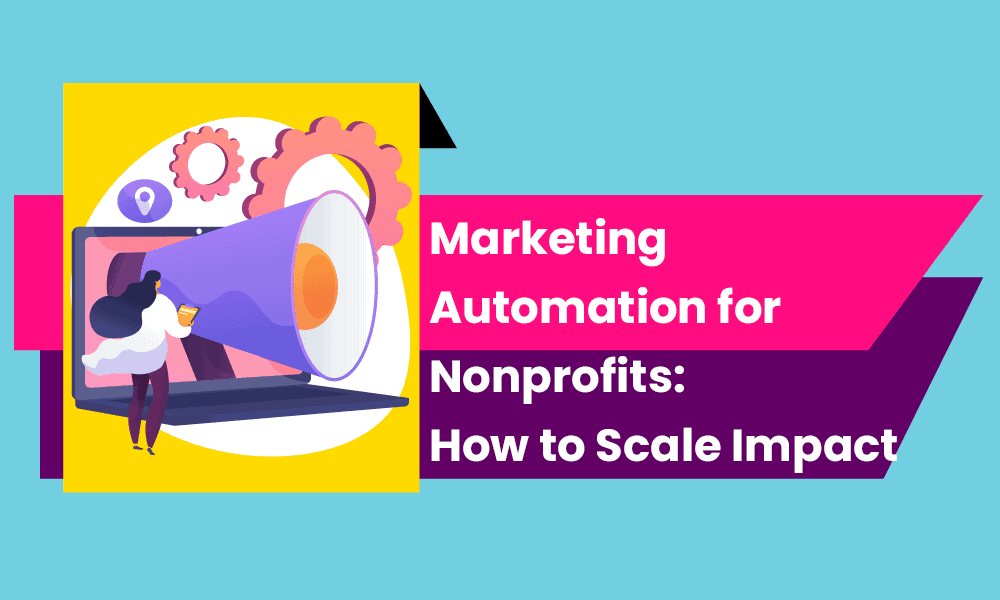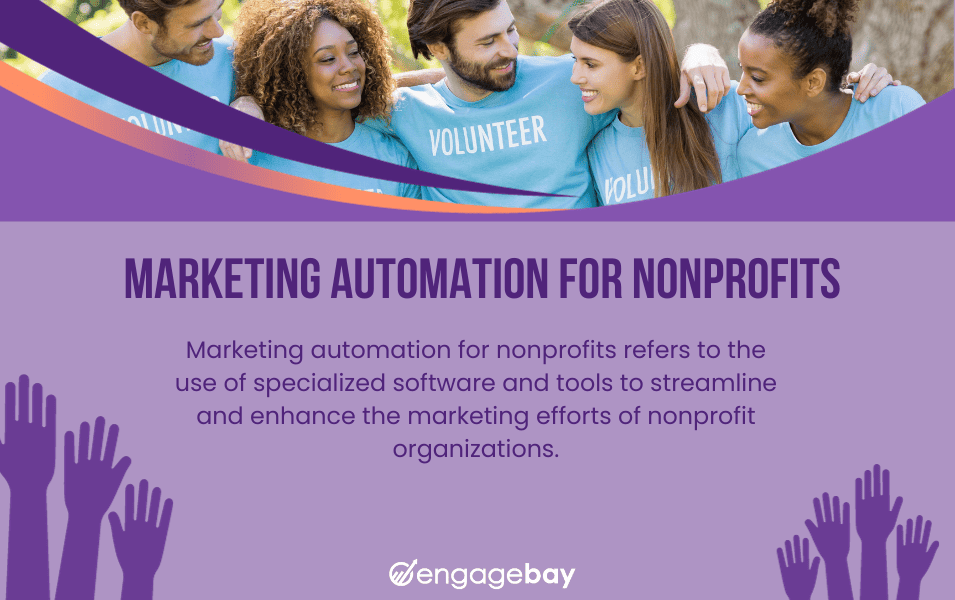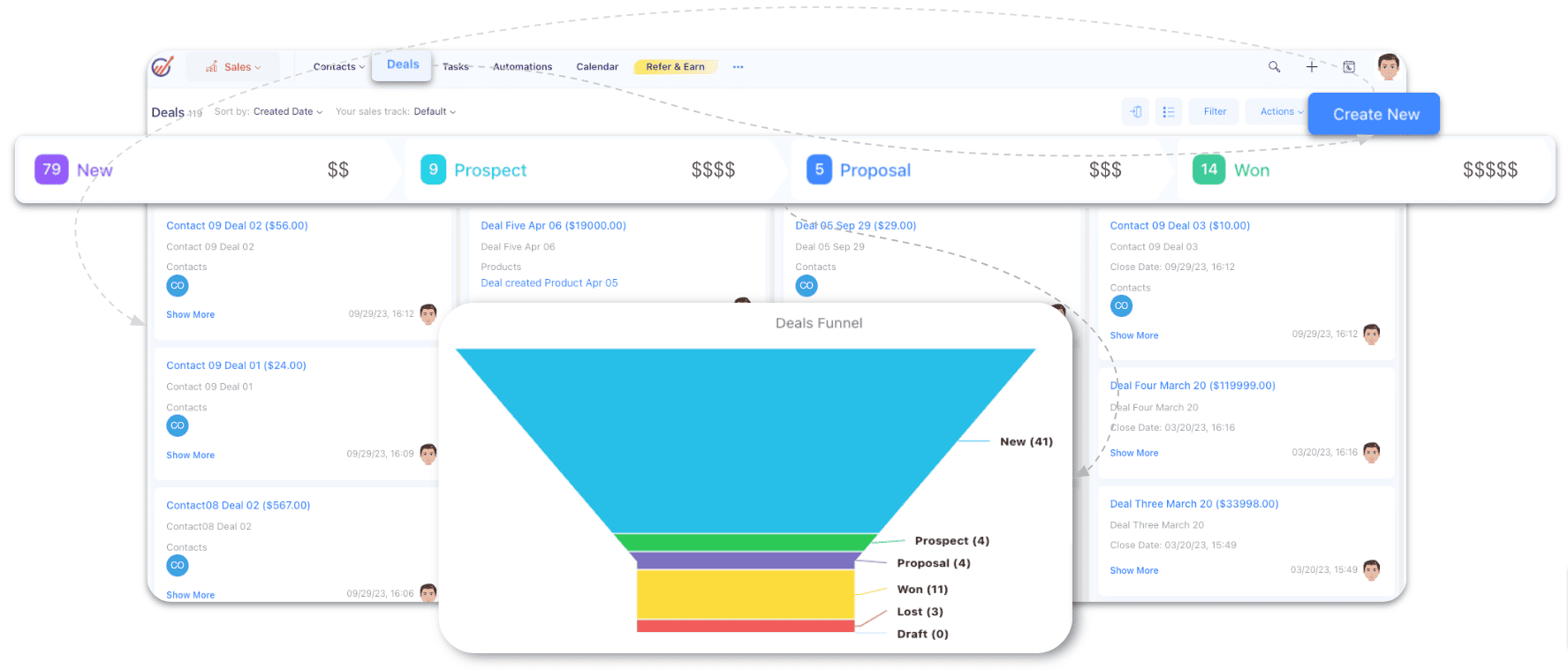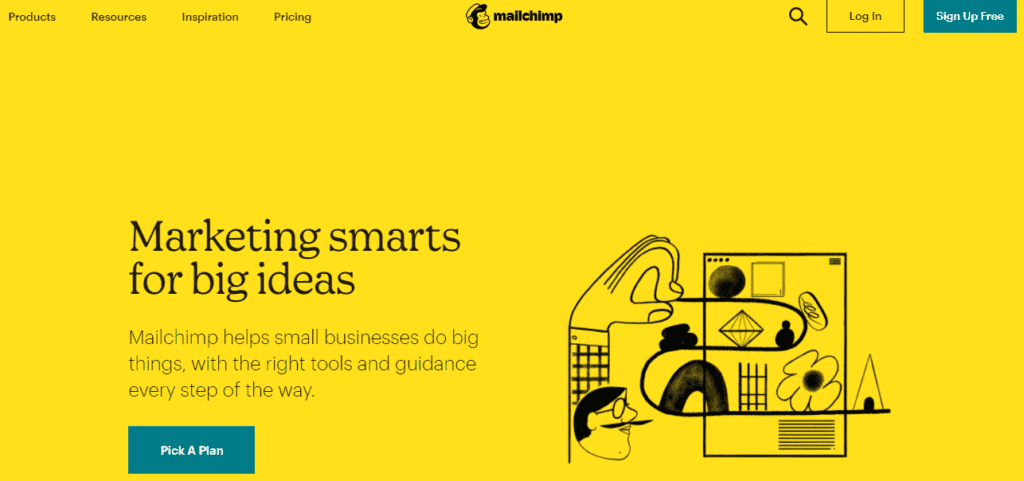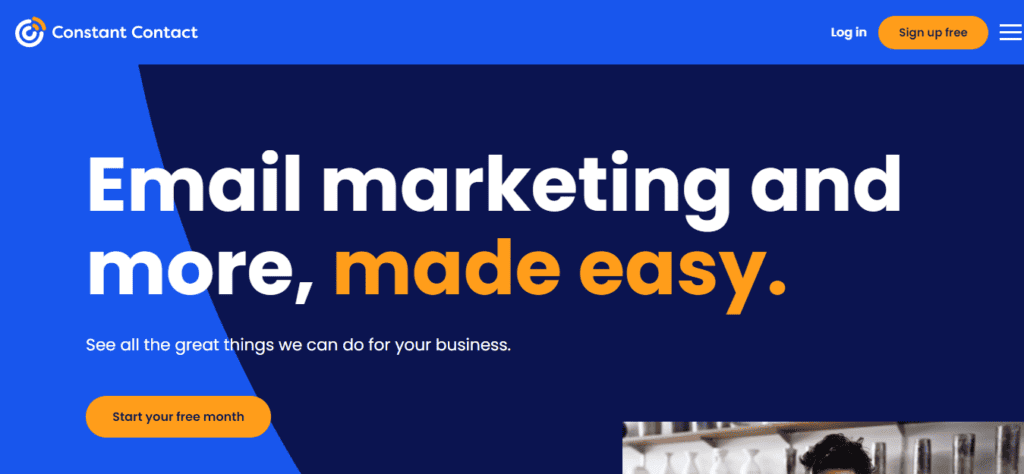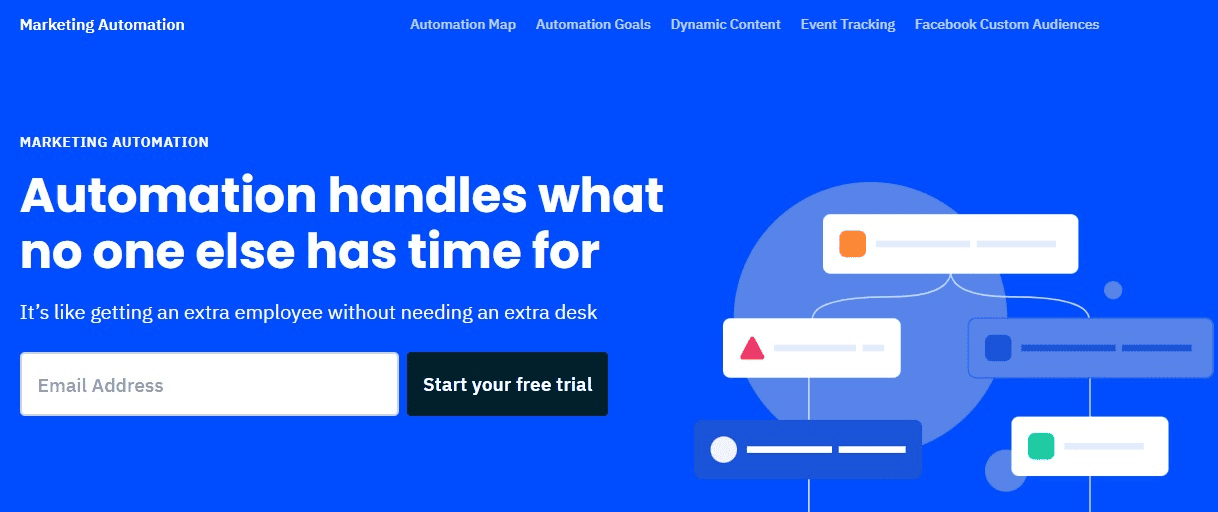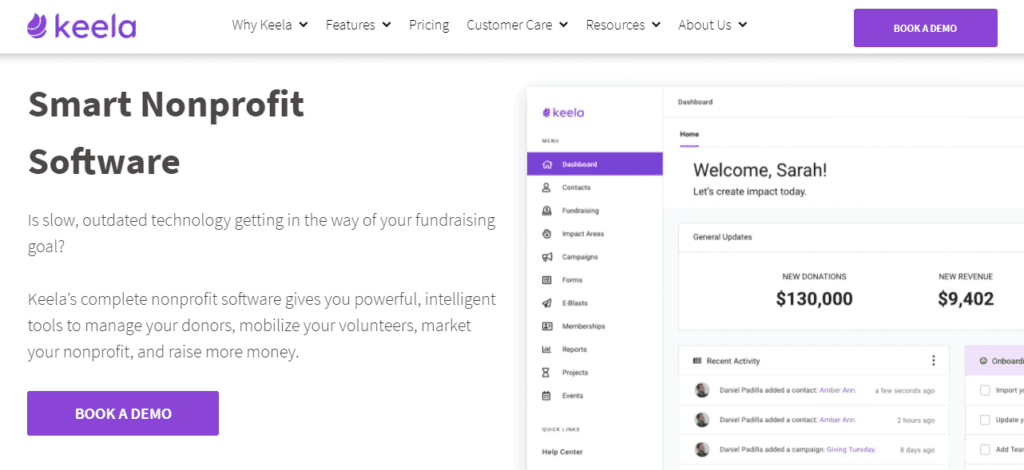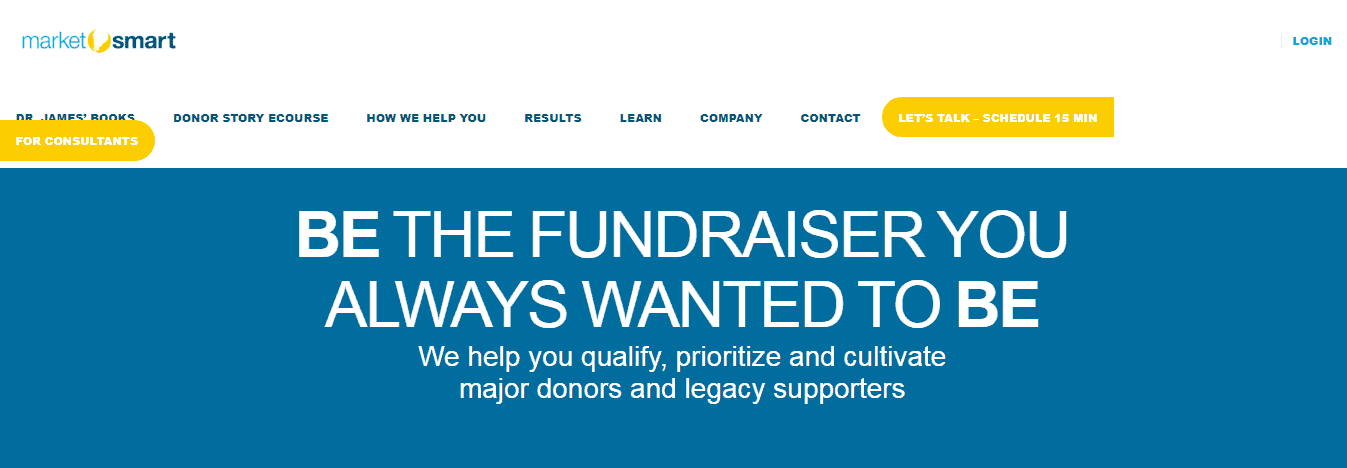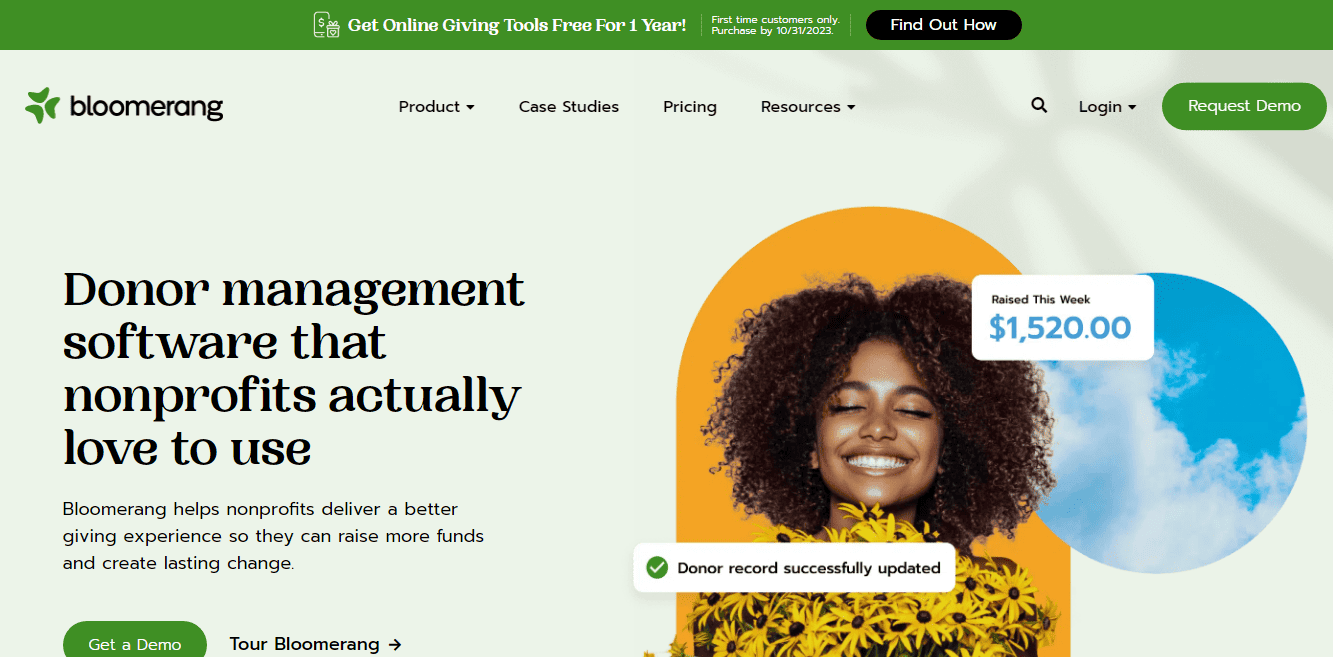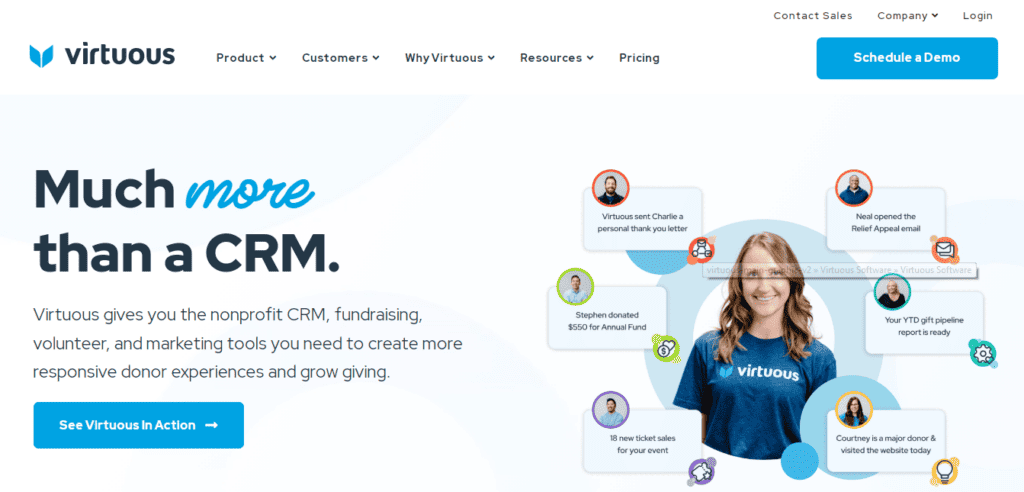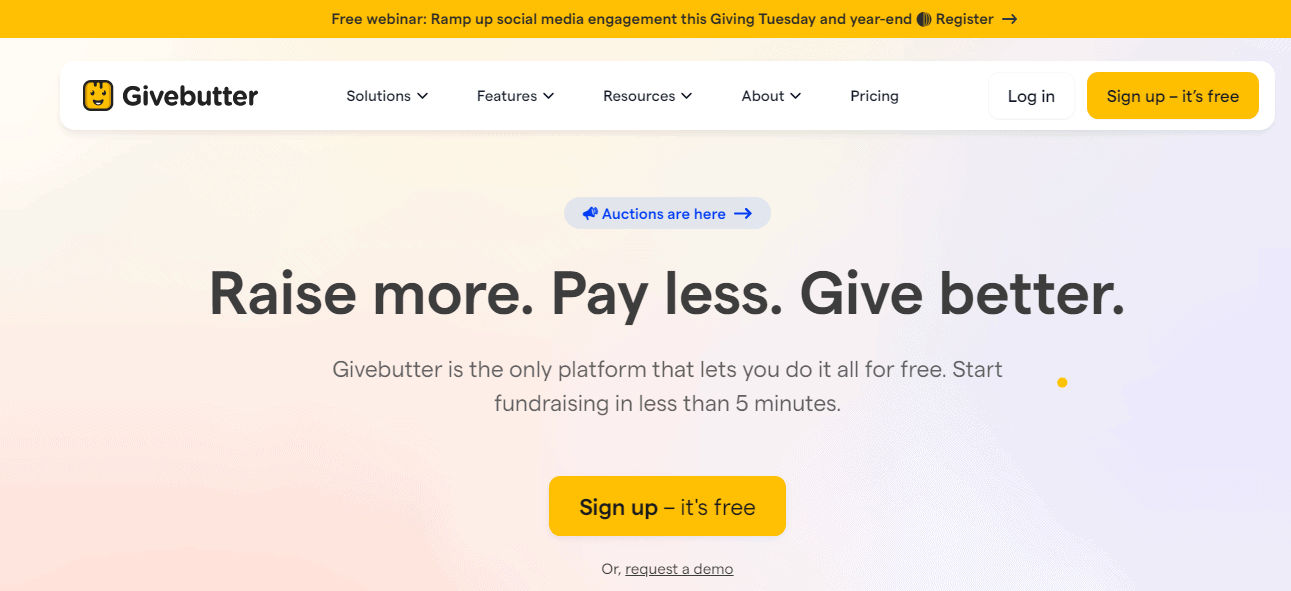To outsiders, running a nonprofit is nothing like a regular business.
Yes, a lot of nonprofits don’t sell stuff to earn their money. But if you work at a nonprofit, you know it isn’t any easier to raise funds than, say, a startup – even with a great business plan.
If anything, competing for donors’ time and money is a constant battle. Now, if you’re on a tight budget, the last thing you might want to hear about is marketing automation for nonprofits. However, bear with me. I’ll show you how it can help solve some of the biggest problems you currently face: pitching the right donors, running successful events, or building an online community.
What you’ll learn in this blog post:
→ How marketing automation helps nonprofits
→ How to set up marketing automation for your nonprofit organization
→ 11 of the best marketing automation tools for nonprofits
→ Secrets to choosing the right marketing automation solution for your nonprofit organization
Table of Contents
What is Marketing Automation for Nonprofits?
Marketing automation for nonprofits is the process of using software to enhance the marketing efforts of nonprofit organizations.
Marketing automation software for nonprofits enable you to nurture prospects and raise awareness by targeting them with highly personalized and relevant content, thus converting them into loyal donors, volunteers, and supporters.
Marketing Automation for Nonprofits: A Snapshot
Let’s put it this way: By implementing marketing automation, you already have a foot in the door before you even email a prospective donor. How? Read on to find out.
When it comes to effective marketing campaigns, customers (donors in this scenario) should take center stage.
Marketing automation for nonprofits does this by utilizing many tools, including customer relationship management (CRM), to create efficient marketing campaigns and quickly close deals.
Let’s take an example.
During the lead-capturing phase, awareness and content broadcasts are essential tasks.
A marketing automation platform can help you achieve this by providing relevant data and content to build a strong relationship with your donors while creating a quality brand presence.
It can streamline internal processes, automate time-consuming tasks, and help you have one-to-one conversations with your audience. Research shows that 53% of nonprofits prioritized digital communications as part of their growth strategy.
This will let your leads warm up to you and help them better understand your products and services.
Using intelligent data analysis, you can know the specific products your leads are leaning towards and then target them with personalized and tailored messages.
Furthermore, you can classify your leads into groups and target those that could help grow your business.
In the final stage of marketing automation, adequately nurtured and promising leads are automatically assigned to your sales team to help close deals and increase revenue.
This is what makes marketing automation so valuable.
Because the software automates a significant portion of the campaign, your marketing team has more time to focus on another crucial part of the marketing success strategy. Moreover, marketing automation can help you obtain a holistic view of your customer’s behavior using various trackers and metrics.
It does this by following your user’s digital footprint as they surf your websites, engage with you on social media, and read your emails.
Based on these data, you can design a customized follow-up plan.
How Can Marketing Automation Help Nonprofits?
Like any other organization, nonprofits need email and marketing campaigns to improve their outreach.
Marketing automation for nonprofits can help refine your marketing strategy by helping you plan ahead, trigger automations, enhance lead capturing, and streamline your social media presence.
Below are some important ways marketing automation can help take your marketing success to the next level:
- Personalize your messaging
- Spread the word through social media management
- Streamline follow-ups
- Devise successful email campaigns
- Nurture donors through triggered email campaigns
- Automate lead capture
- Create rapport with donors and supporters
1. Personalize your messaging
Nonprofits often have moving stories to tell.
However, you don’t always have the time or resources to tailor those messages to the unique interests of different donors. This triggers an avalanche of performance issues: poor open rates, higher unsubscribe rates, damaged sender reputation, spam reports – you name it.
Marketing automation tools use segmentation and analytics to personalize each message. The result: better donor engagement.
2. Spread the word through social media management
Most nonprofit marketers have resigned themselves to switching between multiple social media platforms when interacting with their communities. It can cause fatigue and affect how you communicate. No more.
With a marketing automation tool, you can monitor all your social media channels and respond to comments from one location. You can schedule content for different times of the day, A/B test messages, and get real-time engagement reports.
EngageBay’s Social Suite and powerful automation features can help you do just that.
3. Streamline follow-ups
It can take several emails or calls for a donor to agree to a meeting. Still, you can never rule out a no-show. If you’re organizing a fundraiser, follow-ups can take exponentially longer – especially for small teams. Thankfully, marketing automation tools like EngageBay can help you level up.
For example, you can send donors a scheduling link via email and let them choose their time slot. You can set triggers for automatic confirmation emails and reminder messages. Schedule posts, answer queries, and launch social media outreach programs to enhance supporter actions.
4. Devise successful email campaigns
To raise funds and awareness about your nonprofit, you need to constantly and relentlessly market your ideas to potential donors.
With marketing automation, you can send emails to the right people at the right time.
You can combine your CRM database, email builder, and automation tools to create a powerful campaign that can amplify fundraiser turnouts, bring in more volunteers, and increase donor support.
Marketing automation lets you schedule your emails smartly for the most optimal open times, and consequently, better conversion rates.
Before launching, you can preview your email templates, and lists to check for errors or omissions and check them for their responsiveness across various devices.
Read also: Free CRM Software For Nonprofits To Get More Signups
5. Nurture donors through triggered email campaigns
Email campaigns can help you nudge your supporters and donors in the right direction. Automatically triggering personalized emails based on your supporters’ actions can help you reduce workload and push them towards a particular goal.
Imagine this: a supporter subscribes to your newsletter. Based on this and subsequent actions, a marketing automation software triggers relevant emails to encourage them toward your nonprofit’s goal to gather donations or sign petitions.
With EngageBay’s smart triggers and sequences, you can build powerful visual workflows and wipe out the mundane, repetitive tasks from your daily routine.
With advanced, live metrics, you can gauge your email campaigns’ success rates and tweak them accordingly.
6. Automate lead capture
Building a carefully curated list of supporters is crucial to any nonprofit’s success. However, manually going through the motions can take up vast amounts of time and resources.
A marketing automation software for nonprofits can help you capture leads automatically and build a helpful supporter database.
You can capture leads and collect information when a donor or supporter performs the following:
- Signs a petition online for your organization’s cause
- Subscribes for your email subscription
- Provides their email to acquire a downloadable resource.
This data can help you create supporter profiles in your CRM and build an ongoing relationship with them.
As you begin to interact more and more, you can capture and add more information to their profiles. Over time, these leads may eventually become regular donors and avid supporters of your organization.
You also don’t have to rely on your gut instinct for prospecting anymore. Marketing automation tools can score prospective leads based on their interests (predictive lead scoring), net worth, and donation history, saving you time and effort.
With EngageBay’s smart lead capture tool, you can populate your CRM with relevant information and strengthen your relationship with your community.

7. Create rapport with donors and supporters
Marketing automation for nonprofits is an incredible way to send personalized messages to your donors on their birthdays automatically.
Moreover, by inviting them to your nonprofit’s events, you can get them genuinely engaged with you, paving the way for solid, lifelong relationships.
To do this, you need to understand your donors, supporters, and volunteers very well.
Marketing automation can help you do this by monitoring their web activities, tracking their weblink clickthroughs and email opens, and enhancing your content consumption.
This will help you get a holistic view of your support base.
Read also: Nonprofit Email Marketing: Tips, Tools, and Best Practices
How to Set Up Marketing Automation for Nonprofits
When implementing marketing automation, think of people first and then the process. By people, I mean both employees and donors. Here are some key factors to consider:
- Define your goals
- Map your customer journey to internal processes
- Revisit your donor segmentation
- Set up automation workflows
- Take advantage of reporting and analytics
1. Define your goals
Think about your big goals for the year. If you want to grow your donations, you’ll need specific metrics and supporting KPIs to stay on track. For example, a good metric to measure this might be the number of ‘unique visitors’ with ‘lead generation rate’ as a KPI.
2. Map your customer journey to internal processes
This will help you visualize the decision points or customer actions like email opt-ins that trigger marketing sequences like welcome emails, promo codes or discounts, etc. You’ll know what touchpoints get the most activity. It will bring clarity on what to automate and why.
3. Revisit your donor segmentation
Fine-tuning segments can help you run targeted messages at the right time. For example, donate today and get an exclusive welcome kit (for first-time donors). You’ll be able to define better lead scoring criteria, prioritize follow-ups, and sunset/opt-out disengaged subscribers within your funnel. As a spin-off effect, you might see improved email deliverability and engagement.
A quick tip: Segment your ideal customers and create lookalike audiences to rebuild your list over time.
Read also: 8 Affordable (Paid) CRM Software for Nonprofits
4. Set up automation workflows
You can use tags to differentiate between specific donor segments. Create content buckets based on browsing history, page views, email opens, clicks, and other engagement metrics. You can even A/B test all email subject lines and CTAs. EngageBay’s Smart Workflows do all of this for you- automatically.
A quick tip: When employees are forced to adapt to a new tool and process overnight, their performance and morale suffer. The key is to introduce new features gradually and transition slowly to new workflows.
5. Take advantage of reporting and analytics
With the correct data, you can measure or improve your performance. Based on your KPIs, use standard or custom reports to optimize campaigns and inform your future marketing strategy.
Read also: Nonprofits CRM — Using Your CRM for Fundraising and More
11 Best Marketing Automation Platforms for Nonprofits
Let’s check out 11 of the best marketing automation tools to meet the specific needs of your nonprofit organization.
| Software | Starting Price | Free Version | G2 Rating |
| EngageBay | $14.99/month | Yes | 4.6 |
| Mailchimp | $13/month | Yes | 4.3 |
| Constant Contact | $12/month | No | 4.0 |
| ActiveCampaign | $29/month | No | 4.5 |
| Keela | $99/month | No | 4.6 |
| MarketSmart | Custom-priced | No | – |
| Bloomerang | $119/month | No | 4.7 |
| Virtuous | Custom-priced | No | 4.5 |
| Givebutter | $5 per $1,000 | No | 4.7 |
| WealthEngine | Custom-priced | No | 4.3 |
| Calendly | $10/month | Yes | 4.7 |
1. EngageBay
EngageBay is one of the most affordable all-in-one marketing, sales, and service platforms with a free built-in CRM system.
More importantly, EngageBay’s nonprofit CRM is entirely free.
Features
- Lead management: Capture leads from multiple channels and sync them to a built-in CRM seamlessly. Uses predictive lead scoring to prioritize and assign them based on time zone and engagement level.
- 360-degree profiles: Get donor’s interaction history, contact information, social media, and engagement stats, all in a single place. It can help you anticipate their needs and deliver personalized offers.
- A/B testing: Testing subject lines and offers is critical for any nonprofit that wants to grow its list and hit fundraising goals. EngageBay offers a sandbox environment to experiment with different email variations and choose the best one.
- Automated scheduling: Let clients book meetings and generate automatic confirmation or reminder emails while you sync calendars and appointment schedules for your team. This feature saves you a whole lot of time and effort.
Pricing
EngageBay offers four plans:
- Free: $0/month
- Basic: $14.99/month
- Growth: $49.99/month
- Pro: $99.99/month
2. Mailchimp
Mailchimp is another well-known marketing tool for nonprofits.
With a wide range of tools, including templates, custom domains, and segmentation, you can create personalized and visually stunning campaigns to attract donors and supporters to help your organization meet its goals.
Features
- Segment audiences: Use tags and segments to target specific contacts based on location, demographics, etc., and send personalized emails.
- Create appealing designs: Utilize pre-built design templates with the drag-and-drop editor to create appealing emails and landing pages.
- Test send times: Leverage automation to optimize send times and increase open and click rates.
- Customer journey builder: Use the built-in customer journey builder to map decision points and set automation triggers.
Pricing
Mailchimp offers four plans:
- Free: $0/month
- Essentials: $13/month
- Standard: $20/month
- Premium: $350/month
For nonprofits, Mailchimp offers a 15% discount on paid plans.
3. Constant Contact
One of the oldest email marketing software, Constant Contact offers a vast collection of templates to choose from to design your newsletters and emails. Its high deliverability rates mean your emails don’t go to the spam folder.
Constant Contact also lets you manage events, registrations, and tickets in-house, so you don’t need a third-party application — a boon for nonprofits.
Features
- Email automation: Get a full suite of features like workflows, segments, and drip campaigns.
- SMS: Send text messages in bulk to multiple audiences and track engagement in real-time.
- Reports and dashboards: Offers a range of reports and live dashboards for monitoring performance and deliverability.
- Third-party integrations: Connect multiple apps like Shopify to Constant Contact at the click of a button.
Pricing
Constant Contact offers three plans:
- Lite: $12/month
- Standard: $35/month
- Premium: $80/month
Nonprofits get a 20% and 30% discount on their 6-month and 12-month plans, respectively.
4. ActiveCampaign
ActiveCampaign is another highly recommended marketing tool for nonprofits. It combines email automation, workflows, and CRM to give nonprofits a comprehensive solution. You can see key metrics and performance issues in an intuitive and easy-to-grasp report format with detailed analysis.
Features
- Lead capture and scoring: Connect multiple lead sources to build lists and prioritize follow-ups.
- Email notifications: Get notified each time you receive messages and view history and engagement statistics.
- Workflows: Track follow-ups, assign cases, and manage SLAs.
- Reporting: Get real-time reports on KPIs to focus on your goals.
Pricing
ActiveCampaign offers four plans:
- Lite: $29/month
- Plus: $49/month
- Professional: $149/month
- Enterprise: Available on request
5. Keela
Keela’s unique donor management and free nonprofit CRM software lets you manage campaigns and get your organization’s goals to the people effectively.
Features
- Intelligent Contact Insights: AI-powered analytics lets you know what time of the year a specific donor is most likely to donate.
- Customizable donor forms: Customize forms for all types of devices and keep contact profiles current.
- Peer-to-peer fundraising: Offer supporters the tools they need to fundraise with you.
Pricing
Pricing starts at $99/month for 1,000 contacts and operates on a sliding-scale model.
6. MarketSmart
MarketSmart is purpose-built lead gen and gift marketing software for nonprofits. It offers a range of features for lead management and fundraising.
Features
- Survey forms and templates: Identify what attracts donors the most about your mission.
- Lead qualification: Build customer profiles based on website or social activity to identify engaged prospects and pitch to them.
- Email marketing: Send personalized messages at scale and increase your reach.
Pricing
Available on request.
7. Bloomerang
Bloomerang automates both online fundraising campaigns and outdoor event management. This makes it a versatile solution for nonprofits.
Features
- Campaign management: Manage email, social media, landing pages, and payment acknowledgments.
- Event management: Complete workflows for outreach, tickets, registration, donations, and attendance tracking.
- Gift tracking: Sync gift receipts automatically to donor profiles; track gift pledges and build online gifting portals.
Pricing
Pricing starts from $119/month for 1,000 records and operates on a sliding-scale model.
8. Virtuous
Virtuous is a CRM and marketing automation tool designed exclusively for nonprofits.
Features
- Personalization: Integrate donation history, surveys, and previous interactions to create targeted campaigns.
- Integrated CRM: Track lead progression, build donor profiles, run multi-channel marketing campaigns, and analyze performance with a built-in CRM.
- Direct mail: Manage mass mailers, flyers, and other traditional marketing campaigns.
Pricing
Available on request.
9. Givebutter
Givebutter is a fundraising platform that helps nonprofits receive recurring donations and run online auctions.
Features
- Donation forms: Display custom donation forms on the website and social media with payment gateway integration. You can request recurring payments, suggest donation amounts, and collect donor (lead) data.
- Auction pages: Track auction items, manage bids, notify winners, send reminders, and collect payments.
- Fundraising pages: Create compelling content, promote your event on social media, and view payments from one place.
Pricing
For every $1,000 you raise, you get $995, meaning GiveButter charges $5 (from your donors’ money). Or you can pay a small fee to disable this.
10. WealthEngine
WealthEngine is a prospecting tool for nonprofits. It allows you to find donors based on interest, net worth, donation history, and other parameters.
Features
- Donor qualification: Highlight and rank people on your list who will most likely donate to your cause.
- Reporting and analytics: Provide comprehensive data for prospecting and nurturing, including business ownership, stock and property ownership, wealth range, etc.
- Third-party integrations: Connect with a range of accounting, sales, and customer support tools to create seamless business processes.
Pricing
Available on request.
11. Calendly
Calendly is a scheduling tool that simplifies meetings and streamlines team schedules.
Features
- Meeting scheduler: Share your calendar with donors or vendors so they can pick their meeting slots.
- Sync calendars: Auto-updates scheduled meetings across multiple third-party calendars at once.
- Time zone detection: Displays scheduled meetings for you and your invitees’ in the respective local time zones.
Pricing
Calendly offers four plans:
- Free: $0/month
- Standard: $10/month
- Teams: $16/month
- Enterprise: Available on request
CRM in Ecommerce: The Perfect Partners for Personalization
How to Choose the Right Marketing Automation Platform for Your Nonprofit
For nonprofits, choosing the right marketing automation tool is crucial.
Though all marketing platforms provide similar basic features, certain extra features can make all the difference.
Here are some tips to help you invest in the right platform:
- Built-in CRM
- Ease of use
- Cost
- Metrics
- Segmentation
- Free trials
- Security and compliance
1. Built-in CRM
Your email marketing tool and CRM should go hand in hand. This is why it is advisable to choose a platform with a built-in CRM. You want to avoid switching between two applications and manually transferring your donor database information, which is highly time-consuming.
If you already have a CRM, ensure your marketing automation tool integrates seamlessly.
2. Ease of use
The learning curve should not be too steep, and your team should be able to get the job done without technical skills like coding. A drag-and-drop email and form builder can help you achieve just that. Play around with the platform’s building tools before making a decision. At the very least, you should have access to onboarding help and customer support.
Remember: the longer it takes for your team to get hands-on, the higher the opportunity cost will be.
3. Cost
This one is top of mind for most nonprofit founders – and it’s not without reason. Dedicated nonprofit software products usually cost quite a bit more than regular marketing automation tools. There can be a substantial difference between per-seat and per-month pricing models.
Ask your preferred provider if you’re allowed to downgrade to a cheaper plan at no cost or if support costs are extra.
Read also: The Strategies & Tools Guide To Email Marketing for Nonprofits
4. Metrics
Valuable data is indispensable to your marketing success. The platform you choose should be able to track open rates, clickthroughs, subscribe/unsubscribe rates, and other vital metrics.
This can help you analyze what works and what doesn’t.
5. Segmentation
Segmentation can help you organize your supporters based on their behavior and demographics. This can help you build lists and engage with them in a suitable and personalized way.
Using tags, you can discover dormant contacts and reengage or remove them — thus maintaining an up-to-date and valuable database.
6. Free trials
Not all providers offer free trials. Make sure you have the opportunity to try out the tools on your shortlist before you buy. This tells you if the tool is everything it’s made out to be, saving you time and money post-purchase.
7. Security and compliance
Nonprofits are just as responsible for upholding donor privacy and legal compliance as any other organization. Ensure the tool you choose has the necessary authentication, role-based permissions, and encryption features in line with US and international data protection laws.
Fortunately, many vendors provide nonprofit discounts, so be sure to enquire about this.
As your organization grows, you may need to upgrade your plans. Take this into consideration, as upgrading can get quite expensive. You do not want to change vendors every time because of budget constraints.
Read also: Making Sense Of The Types Of Marketing Automation
Conclusion
Nonprofits may not work like a typical business, but they face many of the same marketing problems. That’s why they must borrow proven systems and processes to make a bigger impact.
That’s why you need to have a sound strategy in place before delving into these powerful tools. These marketing automation tools will help you enhance your marketing strategy, but you must have one first.
EngageBay is a free, all-in-one CRM tool that covers virtually every business need a nonprofit might have. It could give you the breakthrough you’ve been looking for.
Sign up for free, or contact us today!
The first version of this article was written by Abdul Bashid

